| |
|
|
| |
Mira Mar Veterinary Hospital
|
|
| |
|
|
| |
|
|
| |
|
|
|
|
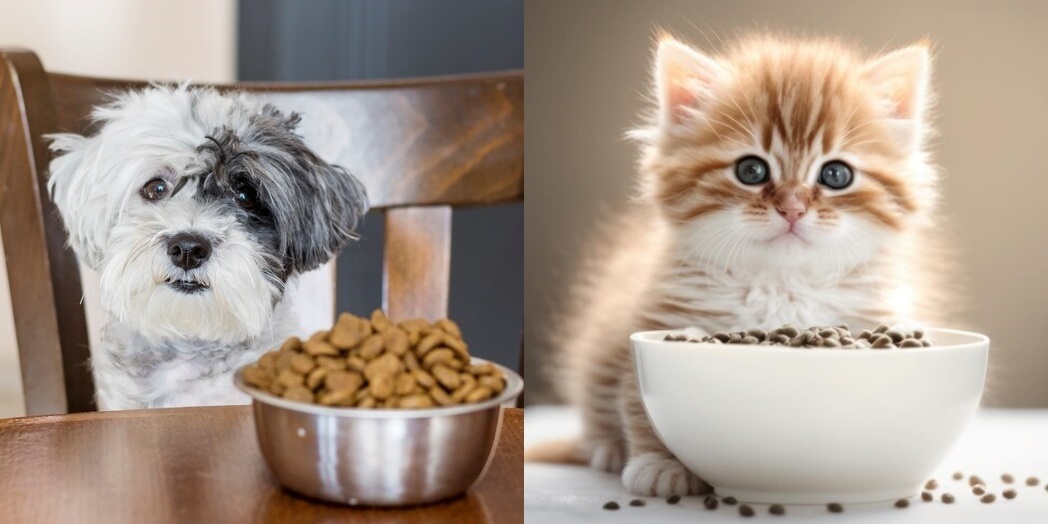
|
| |
February newsletter
|
|
| |
|
|
| |
Hello and welcome to the February edition of our email newsletter. The theme this month is nutrition, so we have some great articles on feeding your pet for their age and stage, which we hope you find informative.
We are once again experiencing a busy time, with lots of animals keeping us entertained and on our toes! We are still seeing snake bites, grass seeds and other summertime issues, so keep being careful with your pets to avoid a visit to us!
PLEASE be mindful of the recent PARVOVIRUS cases that are around Albany at the moment, more information is further in this newsletter. |
|
|
|

|
| |
PARVOVIRUS ALERT!
|
|
| |
|
|
| |
Parvovirus is currently doing the rounds in Albany.
- Parvo is a nasty illness that can affect unvaccinated dogs and especially puppies.
- It causes vomiting, lethargy, diarrhoea, lack of appetite and fever.
- The virus particles can last a long time in the environment and be carried on shoes or clothing, so dogs do not always need direct contact with an infected animal to contract the disease.
- Treatment is fluid therapy and supportive care, but sadly we do not always have success treating this horrid disease.
For more information, we have some website articles that may help:
Please give the clinic a call on 9841 5422 if you have any questions about your dog's vaccination status. |
|
|
|

|
| |
Caitlin's visit to Lawnswood
|
|
| |
|
|
| |
Nurse Caitlin recently had an interesting visit to Lawnswood, a pet crematorium in Perth. She found the facility very impressive, and as a clinic we like the range of individual and touching memorabilia that they can create after the passing of your beloved pet.
They have a lovely website with information about all they offer, as well as resources on pet loss and grief. Thank you to Lance and all at Lawnswood for hosting Caitlin and giving her an insight into your valuable services. |
|
| |
|
|
| |
Lawnswood Website
|
|
|
|

|
| |
Keeping old or overweight dogs on track
|
|
| |
|
|
| |
If your dog is elderly or significantly overweight, coexisting health issues could make exercise a bit of a struggle for all involved. However, daily activity is important for your pet’s mental and physical well-being, and if performed in an appropriate manner, can be safe and enjoyable too!
Here are some general tips on how to exercise your elderly or overweight dog appropriately.
Coexisting health issues
Elderly or overweight dogs are more likely to have health issues that can affect their ability to exercise comfortably and safely.
It is common for pets eight years old and above to be affected by a degree of osteoarthritis, which can affect their general strength and mobility. Older or heavier pets are more likely to “overdo it” whilst exercising, which may exacerbate any pre-existing joint conditions and cause them to limp or move stiffly when they’ve cooled down. Heavier pets are also at a higher risk of respiratory distress or dangerous overheating if they are exercised vigorously, particularly in hot or humid conditions.
For this reason, it’s highly recommended that before embarking on a new fitness regime for your pet, you’ve had their general health assessed recently by one of our veterinarians. If we do find any pre-existing health conditions, we can recommend further diagnostics or treatment as appropriate to manage your pet’s condition.
Low impact exercise
If your pet is elderly or overweight, it’s a good idea to gradually build up their fitness and keep their exercise “low-impact”, with a focus on exercising only in cooler conditions. This means keeping a steady pace, and not encouraging your pet to leap in the air, change direction at speed, or jump up or down from elevated surfaces.
Low-impact exercises for dogs include on-lead walks, off-lead sniffing, and wading in shallow water.
For more personalised advice on your pet’s safest health and exercise recommendations, we’d advise checking in with our knowledgeable vets. |
|
|
|
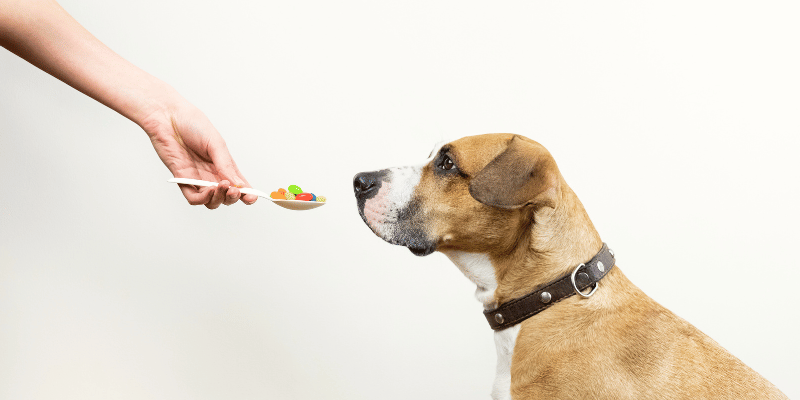
|
| |
Pet foods – The good, the bad, and the marketing ploys
|
|
| |
|
|
| |
With so much contradictory information out there, choosing a pet food has never seemed so complicated!
To help you feel confident in selecting the healthiest, safest, and tastiest diet for your pet, we’ve broken down some key recommendations into bite-sized chunks:
1. Nutritional balance
Ensure that any commercial food you choose for your pet is labelled as “complete and balanced” for your pet’s life stage, which means they meet the international standards for nutrition.
If you choose to prepare your pet’s food at home, it’s recommended to consult a Board-Certified Veterinary Nutritionist first, as research has shown up to 95% of homemade diets are deficient in at least one essential nutrient.
2. Safety
It’s important that your pet food manufacturer complies with the Australian Standard for the Manufacturing and Marketing of Pet Food AS5812:2017 and meets food quality and safety standards with regular laboratory testing at various points of the production process. Check this guide to learn how to read pet food labels and make sure the food is up to standard.
Ensure that any meat you feed your pet is fresh and human-grade. In general, it’s best to avoid commercial “pet meat” or “pet mince”, as these may contain sulphite preservatives that can lead to Vitamin B1 deficiencies.
In households with immunocompromised people or young children, it is not recommended to feed pets raw diets due to the higher risk of harmful bacterial contamination.
3. What you and your pet want and need
If your pet has persistent skin irritation or recurrent digestive upsets, a food allergy could be involved, so it’s recommended to consult our veterinarians for further investigation and treatment.
Otherwise, a high-quality commercial diet is the easiest way to ensure that your pet is eating nutritionally balanced meals, especially if you are limited on food-prep time. Whether this is a kibble, tinned food, or pre-packaged pet meal is up to your wallet and your pet’s individual tastes and health requirements.
For more personalised dietary recommendations for your pet, consult our nutritionally-knowledgeable team. |
|
|
|

|
| |
Problems with protein?
|
|
| |
|
|
| |
In any pet with recurrent skin irritation or gut upset symptoms, the possibility of an underlying food allergy should be considered.
Read on for the ins and outs of food allergies in pets.
Causes of food allergies
Food allergies occur when pets develop an allergic response to particular protein/s. This can happen after many years eating the same diet, so may not necessarily be caused by a recent dietary change as many owners expect.
In dogs, the most common protein-related food allergies are to beef, dairy, chicken, wheat, and lamb, whereas in cats, the most common are beef, chicken, and fish.
Diagnosis of food allergies
If a potential food allergy is suspected, the most reliable means of diagnosis is via a hypoallergenic dietary trial (also known as an elimination diet).
This involves feeding the pet a strict, limited ingredient diet for a set period (usually 8-12 weeks). This may be done through:
- A home-cooked or commercial novel protein diet, containing only a single protein type that the pet has NEVER eaten before (plus a bland carbohydrate such as potato)
- A commercial hydrolysed protein diet, where the contained protein has been chemically altered so that the pet’s body is unlikely to be triggered by it
During this process, the pet shouldn’t be fed any other treats, snacks, or flavoured medications.
A food allergy is diagnosed if the pet has a positive response to the hypoallergenic diet, and then a relapse of their symptoms within two weeks of being “rechallenged” with their regular food.
Treatment of food allergies
Once a food allergy is confirmed in a pet, our vets can advise on suitable long-term dietary options which are nutritionally complete and balanced.
It’s important to bear in mind that pets can suffer from more than one type of allergy at once, and that recurrent skin or gut problems can also have non-allergic causes, so it’s best to seek guidance from our vets if your pet is suffering from similar symptoms. |
|
|
|
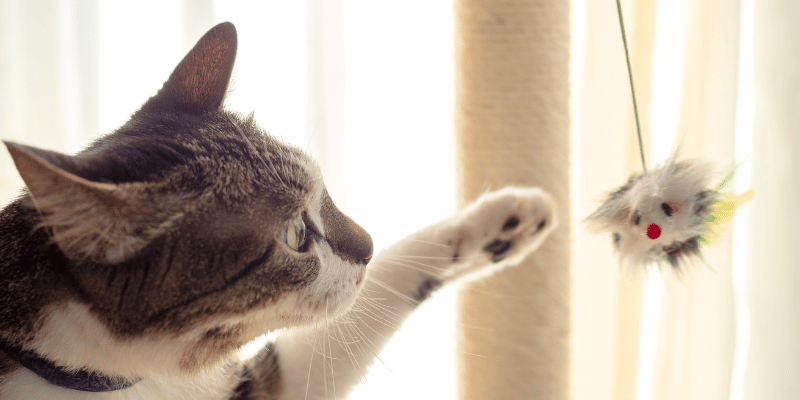
|
| |
Feline fun, indoors!
|
|
| |
|
|
| |
A frequent question that we field from pet owners is, “Is it OK to keep my cat indoors?”
Yes! Keeping your cat inside not only helps to keep them safe by reducing their likelihood of traumatic injuries and contagious diseases, but also protects our beloved wildlife from cats’natural hunting instincts.
Here’s five ways to keep your indoor cat contented, happy, and healthy.
1. Feline furniture
Ideally, indoor cats should be given plenty of opportunities to express natural scratching behaviours and stay fit by being provided with:
- A vertical scratching post tall enough for your cat to stretch up fully upon during use, and heavy enough to withstand some solid scratching action
- An equally solid horizontal scratching “lounge” covered with corrugated cardboard
- A cat “tree”, including a number of platforms for your cat to jump, climb, and rest on to enjoy an elevated view of their world – bonus points if this can be placed by a window
2. A variety of toys
Cats often love a variety of fishing rod style toys to stalk and pounce on, as well as light balls and soft toys to bat around, chase and grab. Try to play with your cat daily, as this is usually enjoyable for both pet and owner!
3. Puzzle feeders
Offering your cat their meals in a puzzle feeder makes mealtimes an interesting challenge and can help them to maintain a healthy weight.
4. Hidey holes
Most cats love bunkering down in sneaky hiding spots, and then popping out to surprise an unwitting passer-by! An old cardboard box with a few cat-sized holes cut out of it can be recycled into a fun (and cheap) playhouse for your pet.
5. Natural nibbles
As well as their favourite foods and treats, many cats enjoy the opportunity to nibble on cat grass, which can be grown in a pot by a window.
For more information on healthy environmental enrichment activities for your indoor cat, consult our feline-friendly team. |
|
|
|

|
| |
What happens after “the snip”?
|
|
| |
|
|
| |
This Spey/Neuter Awareness month, we’re discussing the post-desexing period in pets and how you can help your pet stay in tip-top condition after their “snip!”
The benefits of desexing
Unless you are planning to breed responsibly from your pet, it’s generally recommended to get them desexed. This helps to prevent unwanted cats and dogs going to shelters and being euthanased.
Desexing your pet at an appropriate age can also lead to some potential health benefits for them too, such as:
- Elimination of the risk of testicular tumours
- Elimination of the risk of uterus infections and ovarian cancers in female dogs and cats
- Decreased risk of prostate enlargement and infection in older male dogs
- Decreased risk of tumours and hernias around the bottom in male dogs
- Decreased risk of roaming and fighting-related injuries in male dogs and cats
- Decreased risk of urine marking in male cats
- Decreased risk of mammary cancers in female cats and dogs
The main downside of desexing
Desexing your pet does have a long-term effect on their metabolism, which can lead to unhealthy weight gain if not managed appropriately.
To help keep your pet in healthy body condition post-desexing, we’d recommend learning to check and monitor their body condition score – ask our team about this if you’re unsure.
We’d also recommend changing your pet to an adult healthy weight maintenance diet at an appropriate time – this is usually best done at:
- 10-12 months in cats and small-medium dogs
- 12-18 months in large dogs
- 18-24 months in giant breed dogs
Lastly, keeping your pet as fit and healthy as possible with daily exercise is also effective, not to mention enjoyable for you and them!
For a personalised recommendation on the most appropriate age to desex your pet or any other desexing-related queries, consult our surgery-savvy vets. |
|
|
|
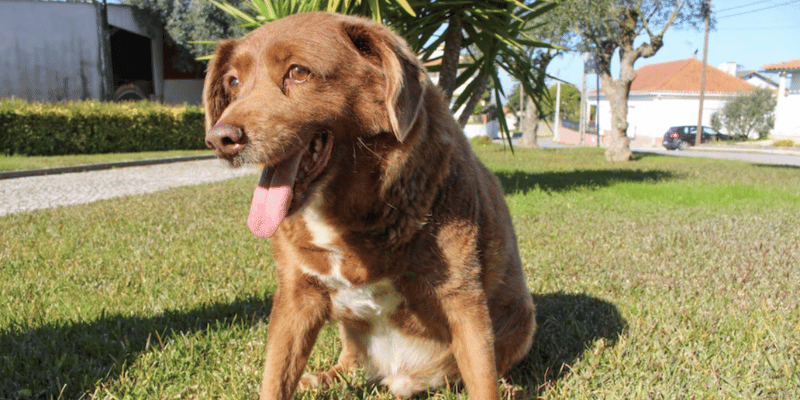
|
| |
Animal News In Brief
|
|
| |
|
|
| |
Bobi's record-breaking age: could this be the world's oldest dog?
Guinness World Records is reviewing the title of the world's oldest dog awarded to Bobi, a Portuguese rafeiro, after veterinarians expressed doubts about his age.
Bobi, who passed away at the official age of 31 years and 165 days, was recognised as the oldest living dog and the oldest dog ever, surpassing the record held by Bluey, an Australian cattle dog. The review has led to a temporary pause of both record titles. Scepticism arose due to discrepancies in Bobi's appearance in photos over the years, and some veterinarians questioned his condition for his age. Bobi's owner, Leonel Costa, defended the dog's age, attributing his longevity to a tranquil country life and a varied diet, including human food.
Click here to read more about Bobi’s story from ABC.
Photo credit: Reuters: Catarina Demony
Enhancing digital literacy in Tasmania through pet photography
The Capturing Smiles project in Launceston, Tasmania, empowers seniors like Pete and Anthony to enhance their digital skills through pet photography. "They knew I had a couple of puppies and asked me if I'd wanted to come along and get some photos," shared Pete, who eagerly participated with his pets, Muffy and Junior. Anthony, along with his dog Terror, also found joy and a newfound skill in the project, saying, "I have dyslexia … talking to texts today has taught me that I no longer have to take 15 minutes to write out a text." This initiative addresses the digital divide in one of Tasmania's most disadvantaged neighbourhoods, illustrating the profound impact of combining personal interests with technology to improve quality of life.
Click here to learn more about the Capturing Smiles project from ABC.
Finn: The eco-friendly dog making a difference
Meet Finn, the eco-conscious dog with a unique hobby that's making a real impact. While Finn enjoys his chew toys, he's equally fond of recycling discarded plastic bottles and aluminium cans, turning them into playthings. This playful habit, encouraged by his owner Stefen, evolved into a neighbourhood cleanup mission. Together, they collect litter during their walks, contributing to a cleaner environment.
The duo's regular visits to the recycling centre turned this hobby into a rewarding venture. Stefen proudly shared their future plans, "In the new year, we'll take Finn to the animal rescue so he can donate the money."
Click here to read more about Finn’s story from The Dodo. |
|
|
|
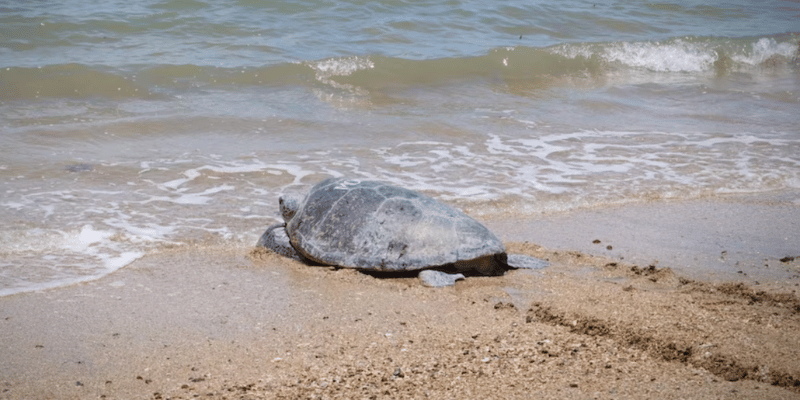
|
| |
Rescue and recovery: Turtle centre treats injured sea turtles amid conservation challenges
|
|
| |
|
|
| |
In a significant conservation effort, the Quoin Island Turtle Rehabilitation Centre is treating Midori, a green sea turtle grappling with a life-threatening injury—a rusty nail deep in her shell. Midori's distressing condition, discovered near the Calliope River, starkly illustrates the adverse effects of human interference on marine wildlife. Under the vigilant care of Kim van Oudheusden, the centre's general manager, Midori receives intensive treatment, embodying the centre's dedication to wildlife preservation.
In a heartening contrast, the centre also shares the success story of Moana, another green sea turtle. After enduring a challenging rescue from the muddy grips of Gladstone Harbour and overcoming soft-shell syndrome during a prolonged 165-day rehabilitation, Moana's release into the ocean marks a significant triumph. This achievement showcases the centre's commitment and effectiveness, with a commendable 73% success rate in turtle rehabilitation.
As the turtle nesting and hatchling season progresses, the centre's efforts underscore the importance of community involvement in conservation. It champions proactive measures, advocating for responsible boating, protection of nesting sites, and the reduction of light pollution on beaches to mitigate the impact on these vulnerable marine inhabitants and ensure the preservation of their natural habitats.
Click here to read the ABC's full story.
Photo credit: ABC Capricornia: Katrina Beavan |
|
|
|
| |
This email contains comments of a general nature only and is not intended to be a substitute for professional veterinary advice. It should not be relied on as the basis for whether you do or don't do anything.
All content © PetPack 2023 |
|
|
|
[Footer]
|